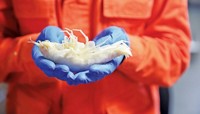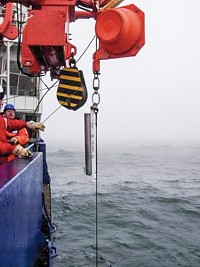Advertisement
Grab your lab coat. Let's get started
Welcome!
Welcome!
Create an account below to get 6 C&EN articles per month, receive newsletters and more - all free.
It seems this is your first time logging in online. Please enter the following information to continue.
As an ACS member you automatically get access to this site. All we need is few more details to create your reading experience.
Not you? Sign in with a different account.
Not you? Sign in with a different account.
ERROR 1
ERROR 1
ERROR 2
ERROR 2
ERROR 2
ERROR 2
ERROR 2
Password and Confirm password must match.
If you have an ACS member number, please enter it here so we can link this account to your membership. (optional)
ERROR 2
ACS values your privacy. By submitting your information, you are gaining access to C&EN and subscribing to our weekly newsletter. We use the information you provide to make your reading experience better, and we will never sell your data to third party members.
Environment
Accumulating Contaminants Kick Off Concerns
Cationic Surfactants: Levels of certain quaternary ammonium compounds in marine sediments around New York City have grown dramatically in the past decade
by Naomi Lubick
September 3, 2010

Certain members of a class of compounds used in personal-care and cleaning products have been steadily growing in the waters around Manhattan, delivered through shower drains and passing relatively unscathed through wastewater treatment plants into the environment. Now researchers report that levels of at least one of these contaminants have increased exponentially over the past decade (Environ. Sci. Technol., DOI: 10.1021/es1011669 and 10.1021/es101169a).
Rarely studied, these quaternary ammonium compounds--known as QACs or "quacks"--are cationic surfactants used in household cleaners, fabric softeners, shampoos, and other personal care products. Various compounds from this chemical family have been reported in watery sediments in Europe and the U.S., at concentrations sometimes as high as micrograms per gram. But long-term trends have remained unreported.
Using a new analytical method that uses liquid chromatography and time-of-flight mass spectrometry to accurately measure QACs (DOI: 10.1021/ac900900y), Bruce Brownawell and Xiaolin Li of Stony Brook University and their colleagues set out to find chronological records for a broad array of QACs. They sampled marine sediments around the New York metropolitan area, from Jamaica Bay, Newark Bay, the Hudson River, and elsewhere, pulling up sediments from as far back as 1938.
The researchers found one particular homolog with 22 carbon atoms in its alkyl chain stood out. Known as behentrimonium, it increased rapidly from 1978 to 2008 in sediments in Jamaica Bay, where concentrations doubled every three years on average. At one site near Newtown Creek, levels jumped 1,000-fold, from 141 to 13,900 ng/g, from 1987 to 2005. The exponential increase is comparable to the escalation of persistent organic pollutants such as PBDEs in Great Lakes sediments, the researchers say.
The trends match the increased use of behentrimonium in hair care products, Brownawell says, though public records for its production and use are incomplete, he concedes. And while behentrimonium seems to stick to muddy sediments in low-oxygen conditions, which might lock them away from degradation by marine organisms, the compound and its brethren may be more readily degraded in higher-oxygen settings. Exploring that hypothesis, along with whether the concentrations will continue to increase, requires more monitoring, Brownawell and his colleagues say.
Marc Guerts, a biologist at QAC-producer AkzoNobel, says the data described in these two papers probably represent a worst-case scenario. QAC concentrations in and around New York City may be particularly high because of the region's dense residential populations and history of untreated wastewater polluting rivers and streams, he says. Still, Guerts agrees that the trends probably reflect a switch by personal care product manufacturers to the more benign behentrimonium.
The method Brownawell and colleagues used is "very specific and very sensitive," comments Ed Furlong, an analytical chemist at the U.S. Geological Survey in Denver, Colo. But the environmental impacts of the "emerging" QACs remain unknown, as does their bioavailability, he adds. Furlong and Brownawell are now examining how much of these compounds end up in biosolids, the solid waste left over after wastewater treatment that is often spread on agricultural soils. The QACs, some of which have antimicrobial properties, may affect microbes there. "Stay tuned," says Furlong.





Join the conversation
Contact the reporter
Submit a Letter to the Editor for publication
Engage with us on Twitter